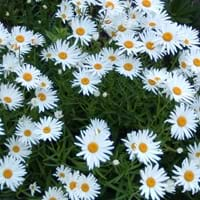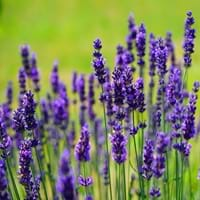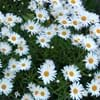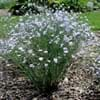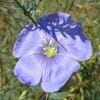Life Span
Perennial
Perennial
Type
Flowering Plants
Perennial
Origin
Hybrid origin
Mediterranean
Types
Not Available
Lodden Blue, Royal Velve, Melissa, Sachet, Sharon Roberts etc
Number of Varieties
Not Available
Habitat
meadows, Upland, Wild
Grassland, Hillside, Rocky areas
USDA Hardiness Zone
5-8
8-9
Sunset Zone
A2, A3, H1, 1a, 1b, 2a, 2b, 3a, 3b, 4, 5, 6, 7, 8, 9, 10, 11, 12, 13, 14, 15, 16, 17, 18, 19, 20, 21, 22, 23, 24
4, 5, 6, 7, 8, 9, 10, 11, 12, 13, 14, 15, 16, 17, 18, 19, 20, 21, 22, 23, 24
Habit
Clump-Forming
Cushion/Mound-forming
Flower Color
White, Yellow
Purple, Blue Violet, Plum
Flower Color Modifier
Bicolor
Bicolor
Fruit Color
Not Available
Not Available
Leaf Color in Spring
Dark Green
Sea Green, Gray Green
Leaf Color in Summer
Dark Green
Sea Green, Gray Green
Leaf Color in Fall
Dark Green
Sea Green, Gray Green
Leaf Color in Winter
Light Green
Light Green
Plant Season
Summer
Spring, Summer, Fall, Winter
Sunlight
Full Sun, Partial Sun
Full Sun
Type of Soil
Loam
Loam, Sand
The pH of Soil
Neutral
Acidic, Neutral
Soil Drainage
Average
Well drained
Bloom Time
Summer
Late Spring, Early Summer, Summer
Tolerances
Drought
Drought
Where to Plant?
Ground, Pot
Ground
How to Plant?
Cuttings, Seedlings
Seedlings, Stem Planting, Transplanting
Plant Maintenance
Medium
Medium
Watering Requirements
Average Water Needs, Drought Tolerant
Does not require lot of watering, Over-watering can cause leaf problems or root diseases, Water when soil is dry
In Summer
Lots of watering
Lots of watering
In Spring
Moderate
Moderate
In Winter
Average Water
Average Water
Soil pH
Neutral
Acidic, Neutral
Soil Type
Loam
Loam, Sand
Soil Drainage Capacity
Average
Well drained
Sun Exposure
Full Sun, Partial Sun
Full Sun
Pruning
Remove damaged leaves, Remove dead branches, Remove dead leaves
Do not prune during shooting season, Prune after flowering, Prune if you want to improve plant shape, Prune in late summer or fall, Prune in spring, Prune to control growth
Fertilizers
All-Purpose Liquid Fertilizer
All-Purpose Liquid Fertilizer
Pests and Diseases
Not Available, Red blotch
Armillaria mellea, Cecidomia, Cuscuta, Gray mold, Meligetes, Phoma, Rhizoctonia Root Rot, Sophronia Humerella
Plant Tolerance
Drought
Drought
Flower Petal Number
Single
Single
Fragrant Bark/Stem
No
Yes
Foliage Texture
Medium
Fine
Foliage Sheen
Matte
Matte
Attracts
Butterflies, Hummingbirds
Butterflies
Allergy
no allergic reactions
Diarrhea, Headache, Itchy eyes, Nausea, Vomiting
Aesthetic Uses
Beautification, Showy Purposes
Beautification, Bouquets, Showy Purposes, Used for decorating walls, fences, gates, hedges, etc.
Beauty Benefits
Not Available
Not Available
Environmental Uses
Air purification
Air purification
Medicinal Uses
No Medicinal Use
Acne, Skin irritation
Part of Plant Used
Flowers
Flowers
Other Uses
Condiment
Oil is used for aromatherapy, Oil is used in perfume, soaps, creams, etc., Showy Purposes, Used As Food, Used as Ornamental plant, Used for fragrance
Used As Indoor Plant
No
No
Used As Outdoor Plant
Yes
Yes
Garden Design
Container, Cutflower, Mixed Border
Bedding Plant, Container, Cutflower, Feature Plant, Herb, Vegetable, Mixed Border, Rock Garden, Wall
Botanical Name
LEUCANTHEMUM 'Full Sail'
LAVANDULA stoechas 'Bee Brilliant'
Common Name
Shasta Daisy
Spanish Lavender
In Hindi
Shasta Daisy
फ्रेंच लैवेंडर
In German
Shasta Daisy
Französisch Lavendel
In French
Shasta Daisy
lavande française
In Spanish
Shasta Daisy
lavanda francés
In Greek
Shasta Daisy
γαλλική λεβάντα
In Portuguese
Shasta Daisy
lavanda francesa
In Polish
Shasta Daisy
francuski lawendy
In Latin
Shasta Daisy
stoechade
Phylum
Magnoliophyta
Magnoliophyta
Class
Magnoliopsida
Magnoliopsida
Family
Asteraceae
Lamiaceae
Genus
Leucanthemum
Lavandula
Clade
Angiosperms, Asterids, Eudicots
Angiosperms, Asterids, Eudicots
Tribe
Anthemideae
Not Available
Subfamily
Asteroideae
Not Available
Number of Species
Not Available
Season and Care of Shasta Daisy and French Lavender
Season and care of Shasta Daisy and French Lavender is important to know. While considering everything about Shasta Daisy and French Lavender Care, growing season is an essential factor. Shasta Daisy season is Summer and French Lavender season is Summer. The type of soil for Shasta Daisy is Loam and for French Lavender is Loam, Sand while the PH of soil for Shasta Daisy is Neutral and for French Lavender is Acidic, Neutral.
Shasta Daisy and French Lavender Physical Information
Shasta Daisy and French Lavender physical information is very important for comparison. Shasta Daisy height is 30.50 cm and width 45.70 cm whereas French Lavender height is 60.00 cm and width 60.00 cm. The color specification of Shasta Daisy and French Lavender are as follows:
Shasta Daisy flower color: White and Yellow
Shasta Daisy leaf color: Dark Green
French Lavender flower color: Purple, Blue Violet and Plum
- French Lavender leaf color: Sea Green and Gray Green
Care of Shasta Daisy and French Lavender
Care of Shasta Daisy and French Lavender include pruning, fertilizers, watering etc. Shasta Daisy pruning is done Remove damaged leaves, Remove dead branches and Remove dead leaves and French Lavender pruning is done Do not prune during shooting season, Prune after flowering, Prune if you want to improve plant shape, Prune in late summer or fall, Prune in spring and Prune to control growth. In summer Shasta Daisy needs Lots of watering and in winter, it needs Average Water. Whereas, in summer French Lavender needs Lots of watering and in winter, it needs Average Water.
